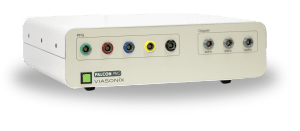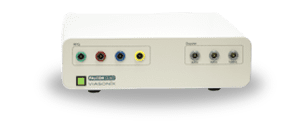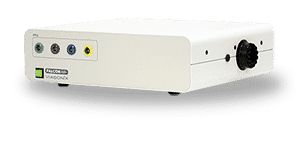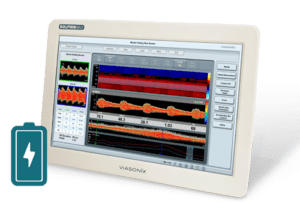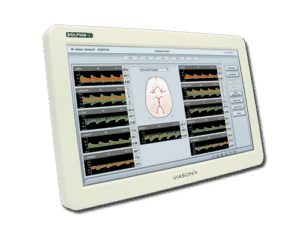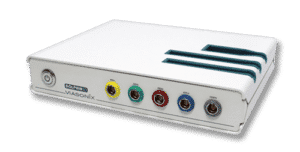What is Air Plethysmography?
The Air Plethysmography (APG) test relates to the use of a pressure cuff as a sensor. The pressure cuff is inflated to low pressure, such as around 20 mmHg for lymphatic occlusion or around 60 mmHg for venous occlusion, and then the air displacement is used to measure blood volume changes at the measuring site.
Most clinical uses of APG are for diagnosis of venous disease and global lower limb hemodynamics, including chronic venous obstruction to flow, venous reflux, calf muscle pump action, or venous hypertension.
Performing Air Plethysmography Test
The APG test allows the selection of patients who may benefit from certain surgical interventions or consider noninvasive therapeutic measures such as limb compression.
The changes in the circumference of the encircling pressure cuff result in pressure changes that correlate with volume displacement.
Thus, the resulting average cuff pressure serves as the sensing element for venous hemodynamics.
The use of APG is not as popular as using PPG sensors due to the simplicity and ease of use of PPG, yet it is still considered in many places as the gold standard primarily for venous testing. APG is also used in conditions where PPG is not considered reliable enough.
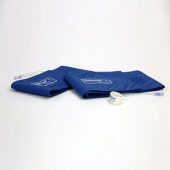
Inflatable Cuffs
High quality available in a variety of sizes
Using the Falcon for APG Test
The Falcon has a dedicated Air Plethysmograph protocol, allowing a fast and simple diagnosis. All that is required is to wrap the pressure cuffs around the site of interest, select the APG protocol in the software, and press the inflate button. The pressure cuffs are inflated to the pre-configured pressure, which can be selected from low lymphatic occlusion pressures such as 20mmHg, or venous occlusion pressures in the range of 60 mmHg. The Falcon allows the APG test to be performed bilaterally on the right and left lower or upper limbs. Furthermore, the Falcon allows the APG test to be performed simultaneously on up to 10 different sites, such as all digits or toes or various sites along with the lower/upper limbs.
The Falcon Sweep time and Scale options allow zooming in or out on the waveforms along the X-axis and the Y-axis, respectively. Displaying the waveforms with a time scale of several minutes allows to clearly identify trend changes in the APG signal.
Expected Results
The APG test provides primarily qualitative information. Quantification of the APG for hemodynamic assessment depends on the specific procedure that is performed. In particular, APG is used to assess the response to alterations in patient posture and muscular exercise.
Selected Literature
Peripheral vascular disease assessment in the lower limb: a review of current and emerging non‑invasive diagnostic methods; Shabani Varaki et al, BioMed Eng OnLine (2018) 17:61
Ultrasound Diagnosis of venous Insufficiency, Marsha M. Neumyer, in “Introduction to Vascular Ultrasonography”, Ed. Pellerito and Polak, Elsevier Health Sciences, 2012, Ch 24, pp 408-428
Overview of Peripheral Arterial Disease of the Lower Extremity, Ali F. AbuRahma and John E. Campbell, Noninvasive Vascular Diagnosis, A.F. AbuRahma (ed.), Springer International Publishing AG 2017, Ch 21, pp 291-318
Disclaimer of Information & Content
The content of Viasonix Ltd. website is for information only, not advice or guarantee of outcome. Information is gathered and shared from reputable sources; however, Viasonix Ltd. Management is not responsible for errors or omissions in reporting or explanation. No individuals, including those under our active care, should use the information, resources or tools contained within this self-diagnosis or self-treat any health-related condition. Viasonix Ltd. Management gives no assurance or warranty regarding the accuracy, timeliness or applicability or the content.
